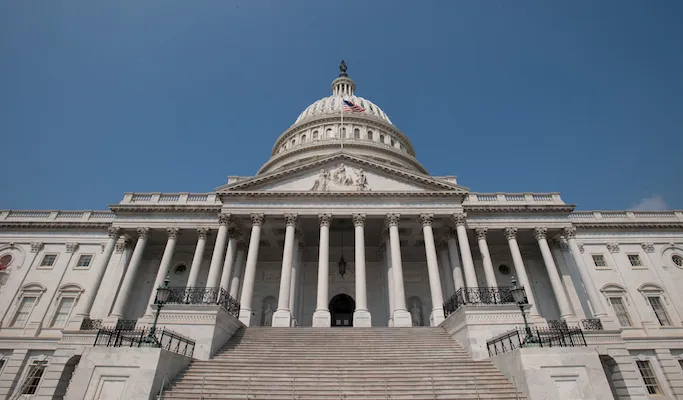ARLINGTON, Va. – The National Association of Chain Drug Stores expressed appreciation to the Centers for Medicare and Medicaid Services (CMS) for provisions in the final 2019 Medicare Part D rule and in the 2019 Rate Announcement and Final Call Letter, which the agency released earlier this week.

The agency signaled the potential for future action on direct and indirect remuneration (DIR) fee reform, took action on one of the policies recommended by NACDS to help address the opioid abuse epidemic, and made progress on other NACDS Medicare priorities.
Regarding DIR fee reform, CMS stated that it has the authority to take action that ultimately could make it more clear to pharmacies how much they will be reimbursed for the Medicare Part D prescriptions that they dispense. This is significant in that CMS is indicating that no legislative action would be needed before it could begin a rulemaking process on this issue.
Specifically, CMS stated it has the authority to require Part D sponsors to apply a portion of manufacturer rebates and all pharmacy price concessions to the price of the drug at the point of sale. Any new requirements regarding the application of rebates at the point of sale would be proposed through rulemaking.
NACDS also applauds CMS for finalizing a proposal to require all Part D sponsors to implement a seven-day limit on initial opioid prescription fills for acute pain. This requirement aligns with NACDS policy recommendations on the opioid abuse epidemic. A Morning Consult survey commissioned by NACDS shows that 74% of respondents support the initial fill limit.
NACDS emphasized the importance of addressing pharmacy DIR fees in comments to the agency on the proposed final rule in January of this year, and also provided input on other issues, including advancing e-prescribing and medication therapy management (MTM); addressing opioid issues in a pro-patient and pro-pharmacy way; and promoting pharmacy access.
“We are grateful to CMS for recognizing many of the concerns NACDS has voiced consistently on DIR fees, opioid abuse prevention and pharmacy access for patients,” NACDS president and chief executive officer Steven Anderson said in a statement. “We hope that action on DIR fee reform will be a top priority, as it is not a tenable situation for pharmacies to have such unpredictability regarding the ultimate level of reimbursement that they will receive for a prescription,” he added.
“Regarding the opioid abuse epidemic, pharmacies are committed to remaining part of the solution and the seven-day initial fill limit for chronic care is part of the carefully developed recommendations that NACDS has proposed. We will continue to work for advancement of the complete array of public policy recommendations,” he explained.
CMS also addressed other issues NACDS raised in its comments on both documents, including:
• Pharmacy “lock-in” programs related to opioid abuse prevention: CMS finalized the definition of a pharmacy to include pharmacies that have multiple locations that share real-time electronic data; all such locations of the pharmacy shall collectively be treated as one pharmacy for purposes of an at-risk beneficiary’s selection of pharmacies. This definition will help ensure legitimate patient access to medications while also combating opioid abuse and diversion.
• National Council for Prescription Drug Programs (NCPDP) SCRIPT Standard for electronic prescribing: CMS said it is delaying the implementation of the new NCPDP SCRIPT Standards until January 2020 to ensure a successful transition. NACDS had noted the benefits for patients and for healthcare providers expected to result from the NCPDP SCRIPT Standards as the official electronic prescribing standard for transmitting prescriptions and prescription-related information in Medicare Part D. However, in order to mitigate difficulties associated with the proposed effective date of January 1, 2019, NACDS urged CMS to initiate a transition period.
• MTM and the Medical Loss Ratio (MLR): CMS finalized its proposal so that Part D MTM programs will be counted as a quality-improving activity for the purpose of calculating a Part D sponsor’s MLR. NACDS had voiced support for a CMS proposal that could further incent plans to utilize MTM programs.
• Pharmacy networks: CMS reiterated that although Part D sponsors may continue to tailor their standard terms and conditions to various types of pharmacies, the final rule clarifies that Part D plan sponsors must not exclude pharmacies from their retail pharmacy networks solely on the basis that they maintain a traditional retail business while also specializing in certain drugs or diseases, or providing home delivery service by mail to surrounding areas.
• Star Ratings: CMS finalized a number of proposals for the Part D Star Ratings proposal that NACDS supported in its comments, including measures related to statin therapies and changes to measures related to medication adherence and opioid use.
“NACDS appreciates the opportunity to present to CMS insights from pharmacists on the front lines of healthcare delivery as we continue to work on finding strategies and solutions to these complex issues,” Anderson concluded.







